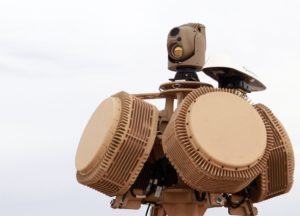
The Army has selected eight counter-drone systems that will make up the Pentagon’s new joint “system of systems” portfolio as the department aims to eliminate redundant capabilities. Maj. Gen. Sean Gainey, director of the Army-led Joint Counter-Small Unmanned Aircraft Systems Office (JCO), told reporters Thursday capabilities not selected will be moved into sustainment with future investment focused on improving the “best of breed” systems and ensuring joint interoperability. “The JCO conducted an assessment of currently fielded Counter-UAS capabilities, most of…

 By
By 











